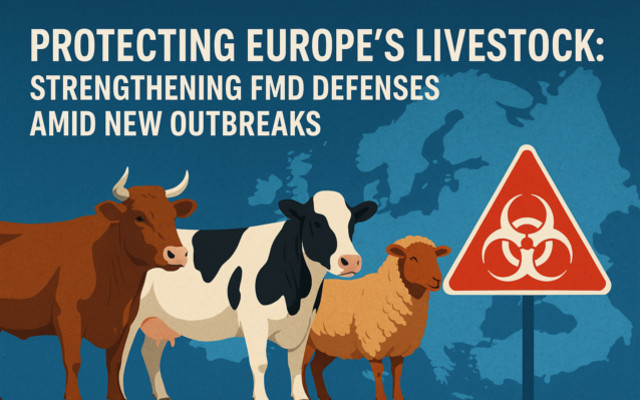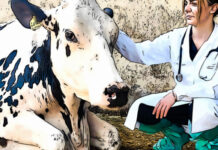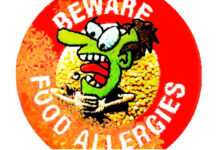Foot-and-Mouth Disease (FMD) is a highly contagious viral infection that poses a serious threat to livestock health and agricultural biosecurity across Europe. This article critically examines the current European Union approach to FMD containment in light of recent confirmed outbreaks in Germany, Hungary, and Slovakia.
The absence of movement restrictions for animals from affected regions, as recommended by WOAH (World Organisation for Animal Health), combined with delayed implementation of serological testing, raises serious concerns regarding the adequacy of current EU response measures.
The existing EU policy framework appears insufficiently focused on proactive disease control, significantly increasing the risk of a widespread epizootic event that could severely impact the European livestock industry.
Foot and Mouth Disease: introduction
Foot and Mouth Disease (FMD) is caused by an apthovirus of the Picornaviridae family, with seven immunologically distinct serotypes (A, O, C, SAT1, SAT2, SAT3, and Asia1) and multiple subtypes.
The virus exhibits high morbidity rates, potentially infecting 100% of susceptible, non-vaccinated populations.
While adult animals rarely succumb to the disease, mortality rates in young animals can be severe due to secondary infections or lack of milk from infected dams (World Organisation for Animal Health, WOAH).
Transmission of FMD among animals
Foot-and-mouth disease (FMD) is among the most contagious viral diseases affecting cloven-hoofed animals, capable of spreading rapidly both within and between herds. The causative agent is shed in large quantities by infected animals through all excretions and secretions — including saliva, milk, semen, urine, and faeces — even before clinical signs emerge. Transmission occurs via several pathways:
- direct contact involves nasal or oral exposure to infected secretions, particularly in shared grazing areas or confined spaces. Maternal transmission may occur through suckling, where young animals are exposed to the virus in the milk or through close contact with infected dams;
- indirect transmission plays a critical role in FMD epidemiology. The virus can survive for days to weeks on fomites such as contaminated feed, water, vehicles, equipment, and human clothing, particularly under cool and humid conditions (Alexandersen et al., 2003);
- airborne transmission is also significant, especially in temperate climates; the virus can travel up to 60 km over land and as far as 300 km over water under optimal meteorological conditions (Gloster et al., 2005). Notably, pigs act as ‘amplifier hosts’, exhaling up to 1,000 times more aerosolised virus than cattle (Donaldson et al., 2001);
- animal products also pose a risk. Raw or improperly processed meat, milk, and bone marrow can harbour viable virus. One of the highest-risk practices is feeding swill containing infected animal products (WOAH);
- vectors, both mechanical and biological, contribute to virus spread. Birds, rodents, and insects may transfer FMD virus passively between locations. In endemic regions, wildlife reservoirs such as African buffalo (Syncerus caffer) maintain the virus asymptomatically, complicating control and eradication efforts (Vosloo et al., 2002).
Epidemiological drivers
Several epidemiological factors exacerbate FMD spread. Infected cattle may shed virus at concentrations of up to 10^8.5 TCID₅₀/mL in their saliva (Belsham, 2005).
The virus is environmentally resilient, capable of surviving for 28 days or more in soil or manure (WOAH).
Furthermore, up to 50% of ruminants may become subclinical carriers, retaining the virus in the oropharynx for extended periods — months to years — thereby serving as silent spreaders (Arzt et al., 2011).
Clinical signs
Infected animals exhibit distinct clinical signs, including vesicles (blisters) on the mouth, muzzle, feet, and teats. These lesions often lead to lameness, hypersalivation, fever, and reduced milk production. In young livestock, FMD can cause high mortality rates due to myocarditis or severe malnutrition (WOAH). Early detection of these symptoms is critical to preventing widespread outbreaks.
Economic impact
Foot-and-Mouth Disease severely disrupts global livestock trade, particularly in endemic regions where prolonged export restrictions are common.
In disease-free zones, outbreaks result in massive economic losses due to culling, disinfection measures, and international trade embargoes.
According to the World Organisation for Animal Health (WOAH), over 100 countries remain non-FMD-free, highlighting the persistent threat this disease poses to agricultural economies.
WOAH-recommended strategies for effective Foot-and-Mouth Disease (FMD) control
The World Organisation for Animal Health (WOAH) outlines a comprehensive strategy for Foot-and-Mouth Disease (FMD) control, combining early detection, strict biosecurity, and targeted vaccination:
- immediate notification to WOAH within 24 hours of detection is mandatory to ensure rapid response and international coordination;
- movement restrictions, including quarantines and robust on-farm biosecurity protocols, are essential to contain the virus and prevent cross-border spread;
- stamping out — culling infected and exposed animals, followed by proper carcass disposal — is a key containment measure to stop transmission.
In FMD-endemic regions, inactivated vaccines are used for long-term control, while emergency ring vaccination may be applied in high-risk areas to curb the spread during outbreaks.
These measures reflect WOAH’s science-based approach to managing transboundary animal diseases and protecting global livestock health.
The EU’s risky approach to FMD control
As of today, 11 April 2025, eleven outbreaks of Foot-and-Mouth Disease (FMD) have been confirmed within EU territory — one in Germany, four in Hungary, and six in Slovakia — posing a serious and immediate threat to the livestock sector in these and neighboring countries. And yet, in a baffling display of negligence:
- the movement of animals from outbreak regions remains unrestricted, despite the clear and present danger. No mandatory serological testing is required at the point of departure, blatantly ignoring the hard-learned lessons from the recent COVID-19 pandemic;
- public veterinarians in the destination countries are tasked with taking blood samples only after the animals have traversed the continent, effectively allowing potential carriers of the virus to move freely and increasing the likelihood of spreading the disease to previously unaffected areas.
This policy is not just flawed — it is reckless. It prioritizes convenience over containment and opens the door to a broader crisis that could devastate Europe’s livestock industry.
Italy tightens FMD controls on animal imports
In response to the recent outbreaks of Foot-and-Mouth Disease (FMD) in Hungary and Slovakia, the Italian Ministry of Health has introduced stringent control measures to safeguard national livestock. According to Circular Letter No. 10150 issued on 7 April 2025, live animal consignments from affected regions must now undergo rigorous checks before entering Italy:
- all vehicles transporting FMD-susceptible species through Friuli Venezia Giulia must be disinfected under military supervision, and are only permitted to proceed directly to a designated farm or slaughterhouse;
- if animals transit through a collection centre, they must be quarantined for at least 14 days and tested twice for FMD before onward movement is authorised.
These enhanced biosecurity protocols are part of Italy’s proactive strategy to prevent disease incursion and align with EU-wide veterinary safeguards, within the framework of competences largely coordinated and constrained by the European Commission.
Interim conclusions: managing the FMD threat
Given FMD’s high transmissibility and significant economic consequences, robust and preemptive control measures are essential. The current EU approach — marked by unrestricted animal movement from outbreak areas and delayed diagnostics — diverges from epidemiological best practices and heightens the risk of a continent-wide epizootic.
To safeguard the livestock sector, immediate policy recalibration is needed. This includes mandatory pre-movement testing, stricter movement restrictions, and enhanced surveillance systems. While vaccination is crucial in endemic zones, disease-free Member States — currently 24 out of 27 — must rely on stringent biosecurity protocols to preserve their status.
A proactive strategy, firmly aligned with WOAH standards and guidelines, is vital to containing FMD and protecting the integrity of Europe’s animal health infrastructure.
Dario Dongo
Cover art copyright © 2025 Dario Dongo (AI-assisted creation)
References
- Alexandersen, S., Zhang, Z., Donaldson, A. I., & Garland, A. J. (2003). The pathogenesis and diagnosis of foot-and-mouth disease. Journal of Comparative Pathology, 129(1), 1–36. https://doi.org/10.1016/S0021-9975(03)00041-0
- Arzt, J., Juleff, N., Zhang, Z., & Rodriguez, L. L. (2011). The pathogenesis of foot-and-mouth disease I: Viral pathways in cattle. Transboundary and Emerging Diseases, 58(4), 291–304. https://doi.org/10.1111/j.1865-1682.2011.01204.x
- Belsham, G. J. (2005). Translation and replication of FMDV RNA. Current Topics in Microbiology and Immunology, 288, 43–70. https://doi.org/10.1007/3-540-27109-0_3
- Donaldson, A. I., Alexandersen, S., Sørensen, J. H., & Mikkelsen, T. (2001). Relative risks of the uncontrollable (airborne) spread of FMD by different species. Veterinary Record, 148(19), 602–604. https://doi.org/10.1136/vr.148.19.602
- Gloster, J., Freshwater, A., Sellers, R. F., & Alexandersen, S. (2005). Re-assessing the likelihood of airborne spread of foot-and-mouth disease at the start of the 1967-1968 UK foot-and-mouth disease epidemic. Epidemiology and infection, 133(5), 767–783. https://doi.org/10.1017/S0950268805004073
- Ministero della Salute, Direzione Generale della Salute Animale (2025, April 7). Focolai di Afta epizootica in Ungheria e Slovacchia. Ulteriore rafforzamento delle misure di controllo per movimentazioni da territori a rischio (Prot. 10150-07/04/2025-SANVET8-MDS-A)
- Vosloo, W., Bastos, A. D., Sangare, O., Hargreaves, S. K., & Thomson, G. R. (2002). Review of the status and control of foot and mouth disease in sub-Saharan Africa. Revue scientifique et technique (International Office of Epizootics), 21(3), 437–449. https://doi.org/10.20506/rst.21.3.1349
- World Organisation for Animal Health. (n.d.). Foot and mouth disease (Technical Disease Card). WOAH. https://www.woah.org/en/disease/foot-and-mouth-disease/
Dario Dongo, lawyer and journalist, PhD in international food law, founder of WIISE (FARE - GIFT - Food Times) and Égalité.








